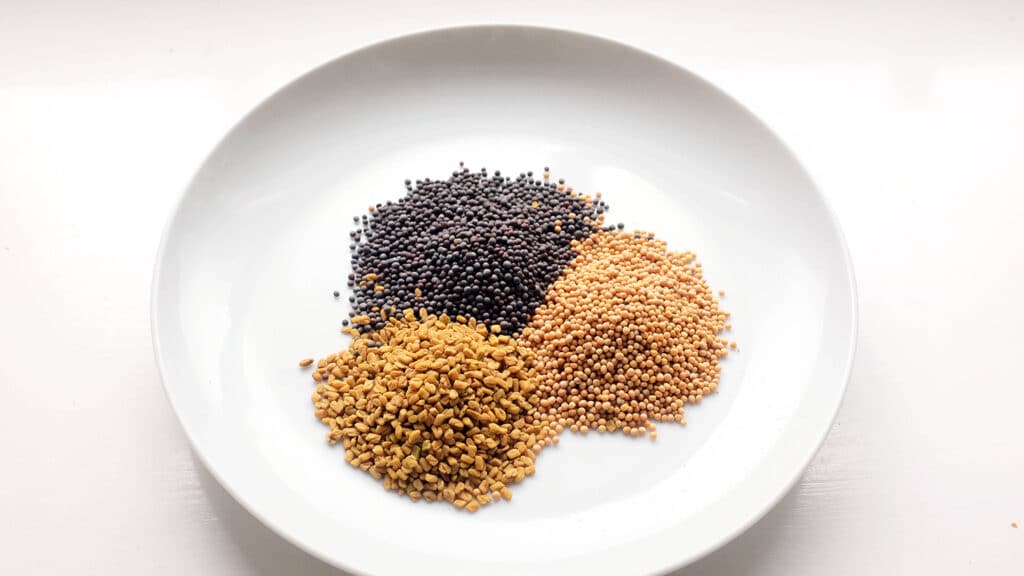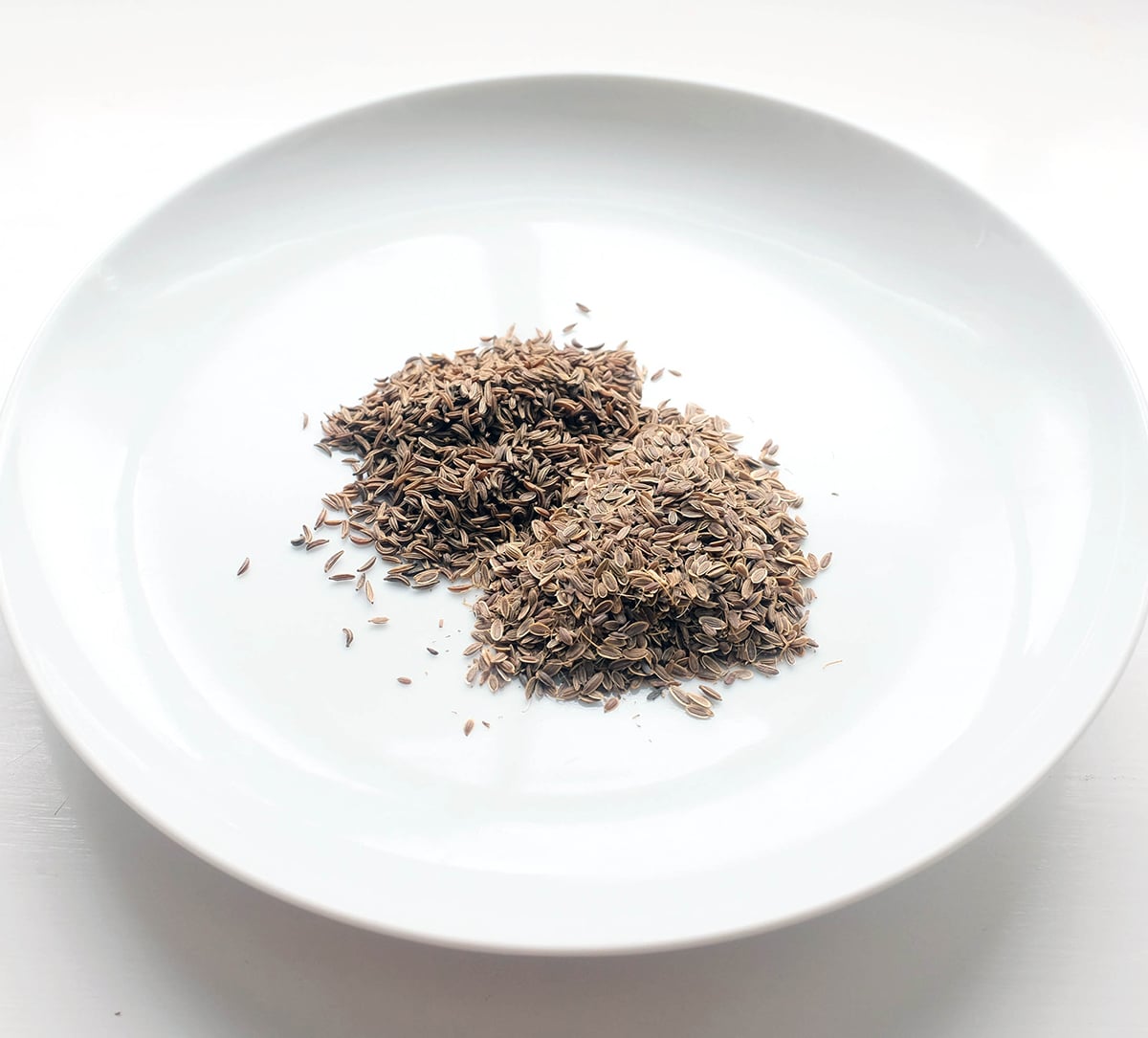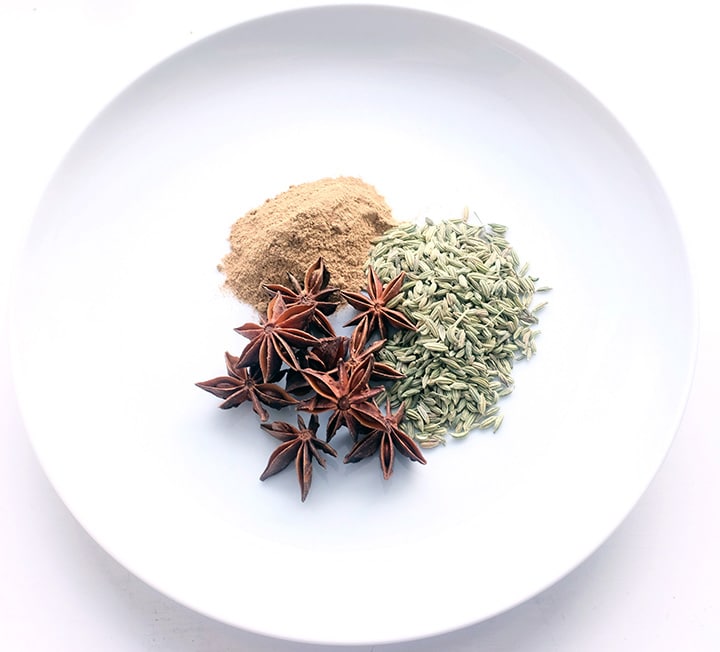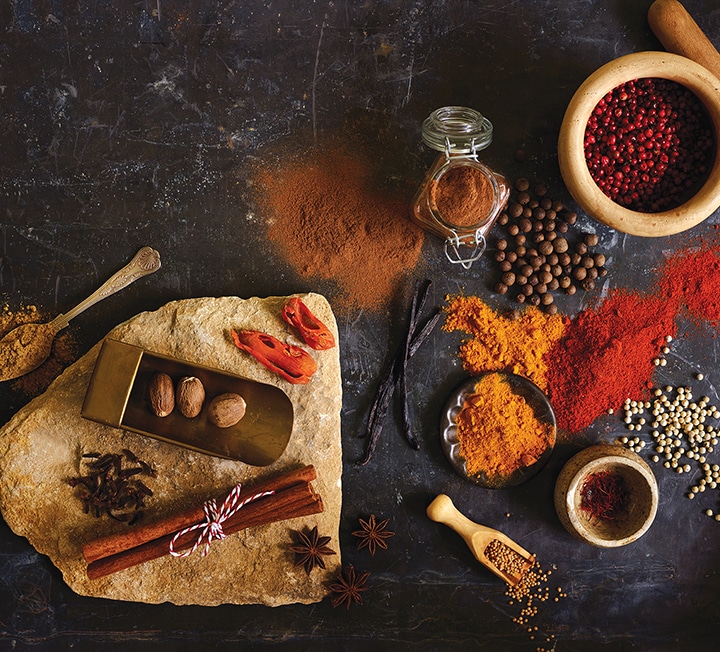The spice series: fenugreek & mustard seeds
Ed Smith takes an in-depth look at the many spices available at the Market. This month: fenugreek and mustard seeds


“THESE SPICES ARE BRUISERS – THE KIND OF AROMATICS THAT SHOULD BE USED JUDICIOUSLY AND IN RELATIVELY SMALL DOSES”
Fenugreek and mustard are distinctive and potent. They are the seeds of unassuming staple crops, yet as spices they are bruisers – the kind of aromatic that should be used judiciously and in relatively small doses. But as with any bully, underneath the tough guy exterior, there’s actually a lot to love.
Fenugreek
The fenugreek plant grows as a wheat-like staple crop in India (mostly in Rajasthan), across the Indian subcontinent and also in the Middle East. The crop is largely cultivated for animal feed, though its seeds and fragrant leaves have important culinary uses too. In this piece, we focus on the yellow, cuboid, stone-like seeds, which cross bitter tones with maple sweetness and, ultimately, a strong and persistent hint of generic curry powder – it’s often the main ingredient in that mix.
Though a key spice in Indian cuisine, fenugreek is now overshadowed in British-Indian domestic cooking by the likes of cumin, coriander, fennel seeds and turmeric. This may be due to the hardness of those seeds, which makes the spice seem a little inaccessible to the uninitiated, and recipe writers are perhaps reluctant to complicate their instructions; relative to the easy crack of a coriander seed, for example, fenugreek seeds appear near impossible to break down by pestle and mortar or domestic spice grinder.
In fact, the seeds are most easily used once they have been soaked for 8-12 hours, to both take the edge off their bitterness, and to soften them enough that they can be mashed into a paste.
It is possible to buy the spice in ground powder form, though again it seems less popular than cumin, coriander and turmeric in western recipes, perhaps on account of that dominant curry house undertone.
Meera Sodha writes in Made in India that fenugreek seeds have “a shockingly bitter aftertaste, which means they should never be used on their own, only among other robust flavours and in small quantities”. She also notes that as well as being soaked and mashed, the seeds can be thrown whole into hot oil at the beginning of a cooking process, along with the likes of mustard seeds.
The whole seeds last longer than most if kept in an air-tight container, though I’d argue if you hold on to a small quantity of any spice for longer than a year, then for the sake of your store cupboard admin, perhaps you should try to incorporate it more often. The powdered form is best used within a few months.
Mustard seeds
Mustard is grown in temperate regions in Pakistan, India, Nepal, Russia, Canada, the United States and of course over here in the UK (mostly in Norfolk). The green leaves can be eaten like a brassica (kale, cabbage, collard greens), and the crop is a major source of oil, similar to rapeseed. But mustard is best known as a spice, thanks to the little balls of flavour that are its seeds. Dried and stored in a jar they smell of very little, but crushed and mixed with water or vinegar, or tempered in hot oil, mustard will strip the hairs from your nostrils. This is due to a chemical reaction that takes place to produce the flavour compound allyl isothiocyanate, which is also released when crushing or grating horseradish and wasabi.
There are three main types of mustard seed: white (also known as yellow), brown and black. Broadly speaking, the white variety is sweeter and mellower (though still pungent), the black is hot, and the brown variety sits somewhere in the middle.
The black variety is particularly common in Indian cooking, but all three are used in different proportions across the mustard paste condiments that we know and love (or hate). Dijon mustard, for example, uses the brown variety (whole), Bordeaux comprises whole black and brown seeds, German mustard the black seeds, and depending where you look for information, English is a mix of brown and white mustard powder (Elizabeth David), or ground black mustard seeds with a sprinkle of ground white (Colmans).
Ground mustard powder (sometimes referred to as mustard ‘flour’) loses potency over time if left in a jar, but also once it’s mixed in water. The seeds, however, are good for at least a year in an air-tight jar.
Flavour pairings
It’s hard to think of a classic flavour pairing for fenugreek; this spice is rarely used on its own. Rather than pick out proteins, vegetables and pulses, then, it’s worth noting that fenugreek’s bitter-maple curry notes are well matched with other strong spices such as cumin and coriander. And in Indian cooking in particular, those mixes are often the dominant flavouring of dishes involving paneer or lentils.
Mustard, on the other hand, immediately invokes beef, pork and chicken. Across a variety of cuisines, these three meats are matched with mustard – whether in whole seed, ground or condiment form. The spice is also an excellent partner for roots like potatoes, celeriac and turnip, and brassicas such as kohlrabi, kale and cabbage. And we shouldn’t forget rabbit – so many of the rabbit recipes out there involve wholegrain mustard.
Cuisines and dishes
As mentioned, fenugreek is commonly used in Indian dishes, as a dominant flavouring in revitalising dals and across masala mixes. The seeds are used in the mix panch phoran, in equal parts alongside fennel, nigella, cumin and black mustard. These are all left whole and tempered in hot oil, before being used to flavour meats, vegetables and stews.
Fenugreek seeds are not, however, restricted to the Indian sub-continent. When ground, they are a major part of the spice rub çemen, which is used as a marinade for the Turkish cured and air-dried beef, pastirma.
And in the Middle East, fenugreek is known as hilbeh, and used (among other things) to make a dip or condiment of the same name. I tried this for the first time in a Lebanese café in Tel Aviv, and was hooked on first dip.
There are numerous recipes in circulation for Bengali mustard chicken (shorshe murgi), where of course the mustard is dominant and adds its own heat to that of fresh chilli.
In French cooking, dishes like celeriac remoulade make use of mustard paste. But it’s often a condiment matched with pork; whether in chop form, or more likely sausage (including acting as a foil to stinky andouillette). The same is true in Germany – is a plate of wurst and sauerkraut complete without a dollop of mustard?
Head north to Scandinavia, and mustard seems creamier and lighter even than that of Dijon (and certainly lurid yellow English). It’s often used in a sauce to cut through pickled herrings.
Specific recipes to look out for
Recipes that make the most of mustard and fenugreek spices include:
— Meera Sodha’s asparagus and peas in a Bengali mustard sauce in Fresh India is an excellent way of mixing Indian flavours with British spring/summer ingredients.
— I like the idea of Atul Kochar’s mustard and yoghurt chutney in his restaurant cooking book Benares. Black mustard seeds are tempered with hot oil until they crackle and pop, then mixed into a yoghurt flavoured with mint, ginger and honey. Excellent with seafood, vegetable fritters and bhajis, apparently.
— For French, why not try Raymond Blanc’s mustard braised rabbit in Kitchen Secrets?
— British chefs cooking with mustard (admittedly in French style) can’t look past Simon Hopkinson’s mustard and tarragon butter to go with steak, found within Week In, Week Out.
— Fenugreek recipes are harder to find. Why not try my version of hilbeh? I found it excellent alongside an omelette filled flatbread.
Market spice heroes
It would be remiss to write of mustard and not mention Fitz Fine Foods, who carry a wide range of mustards, many of them uniquely flavoured – think black olive, balsamic vinegar, cassis and truffle. They stock the range of classic French mustard pastes too.
See Ed’s recipe for the fenugreek-laced Middle Eastern dip hilbeh.


